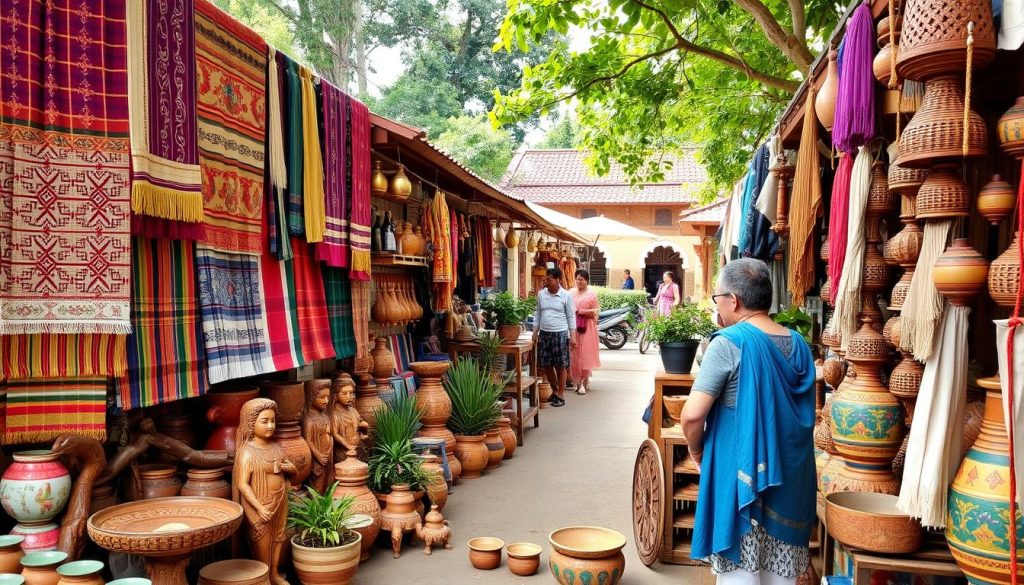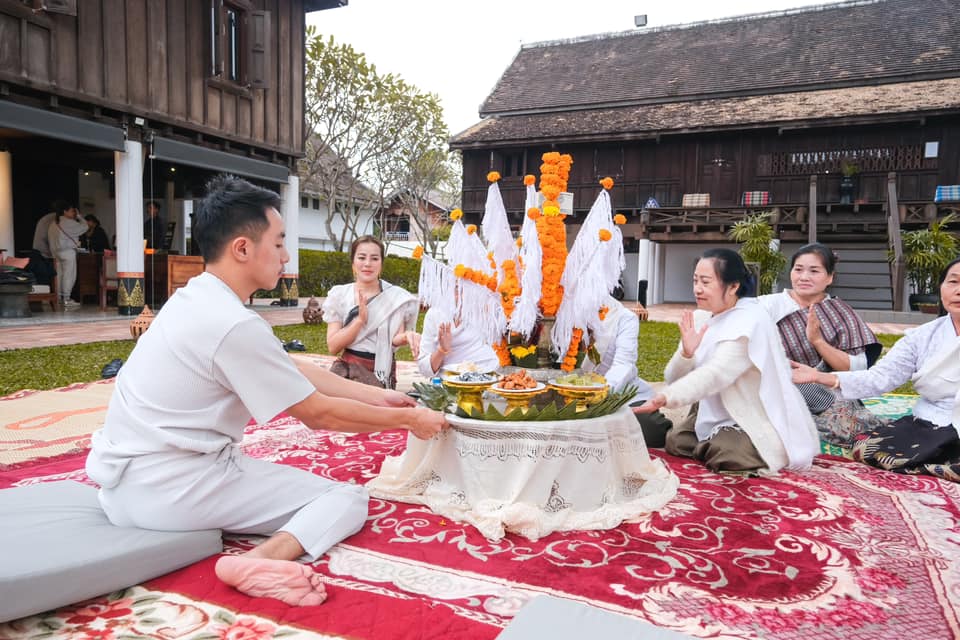1. Overview & Address of the Place
Vientiane, the capital of Laos, showcases a distinctive blend of traditional Lao and French colonial architecture, a legacy from the French colonial era. These colonial buildings, constructed during the late 19th and early 20th centuries, offer a unique insight into the city’s rich history. From administrative buildings to hotels, French colonial architecture has left a lasting imprint on Vientiane’s cityscape.
Name: French Colonial Buildings in Vientiane
Location: Vientiane, Laos
Coordinates: Varies by location (such as 17.9750° N, 102.6340° E for key landmarks)
Best visited: While exploring the city’s historical and cultural landmarks or seeking architectural heritage.
2. History of the Place with 10 Key Facts & Google Maps Link
The French colonial buildings in Vientiane reflect a period of colonial influence and architectural fusion:
- French Colonial Influence: The French first arrived in Laos in the late 19th century, and their influence is still visible in the architecture today.
- Settha Palace Hotel: Built in 1932 as a government building, now a luxurious hotel.
- Lao National Museum: Originally a French governor’s residence, converted into a museum showcasing Laos’ rich history.
- Patuxai Monument: Built between the 1950s and 1960s, this monument’s design is similar to the Arc de Triomphe in Paris and commemorates Laos’ independence from France.
- Hôtel du Commissariat: Constructed in 1925, it now houses government offices.
- Cathédrale du Sacré-Cœur: A Catholic church built by French missionaries in 1928, representing French religious influence.
- Bureau de la Résidence: Built in 1915, this building houses the Ministry of Information and Culture.
- French Style Elements: Many buildings display typical French colonial features, including tiled roofs, wide verandas, and ornate facades.
- City Planning: Vientiane’s urban design reflects French influence, with wide boulevards and formal structures.
- Restoration: While some colonial buildings have been restored, others remain in their original, weathered state, adding to the city’s charm.
3. What Makes “French Colonial Buildings in Vientiane” Popular? + Recommended YouTube Video
Vientiane’s French colonial buildings are popular for their historical and architectural significance:
- Historical Significance: These buildings represent the legacy of French colonial rule and Laos’ evolution as an independent nation.
- Architectural Beauty: The fusion of French and traditional Lao architectural styles creates a unique aesthetic that stands out in Southeast Asia.
- Cultural Insights: These buildings offer an opportunity to explore the cultural exchange between Laos and France during the colonial period.
4. Overall Ratings (1 to 5 Stars)
French colonial buildings in Vientiane are highly rated for their beauty, history, and cultural significance:
Overall Rating: ⭐⭐⭐⭐⭐ (5/5)
Cultural Significance: ⭐⭐⭐⭐⭐ (5/5)
Authenticity: ⭐⭐⭐⭐⭐ (5/5)
Atmosphere & Environment: ⭐⭐⭐⭐⭐ (5/5)
Accessibility: ⭐⭐⭐⭐⭐ (5/5)
Tourist Friendliness: ⭐⭐⭐⭐⭐ (5/5)
5. Weather
Vientiane experiences a tropical climate with distinct wet and dry seasons.
Best Time to Visit: November to February (cooler, dry season)
Temperature Range: 25–35°C (77–95°F)
Wet Season: May to October
Rain Gear: Recommended during the wet season.
6. Nearest Five Hotels
For visitors seeking accommodation near Vientiane’s French colonial buildings, here are five great options:
- Settha Palace Hotel: A former colonial building transformed into a luxurious hotel.
- Vientiane Plaza Hotel: Offers modern amenities with proximity to the city’s colonial architecture.
- Green Park Boutique Hotel: A blend of traditional and contemporary styles, perfect for a cultural stay.
- City Inn Vientiane: A budget-friendly option with convenient access to key sites.
- Ibis Vientiane Nam Phu: Centrally located with essential services for travelers.
7. Timings
The French colonial buildings in Vientiane are visible and accessible at all times.
Opening Hours: 24 hours for the external architecture, while museums and some buildings have regular hours.
Best Time to Visit: Early morning or late afternoon for the best light and fewer crowds.
8. Time Required to Visit
The time required for a visit to these buildings depends on how many you wish to see:
Visit Duration: 1–2 hours for a quick exploration, longer if visiting museums or taking guided tours.
Ideal for: History lovers, architecture enthusiasts, and cultural explorers.
9. Entry Fees & Ticket Booking Details
Some of the French colonial buildings are museums with entry fees:
Entry Fee: Typically 10,000–20,000 LAK for museums (less than $2).
Booking: Not required for external viewing; museums may require on-site ticket purchase.
10. Things to See & Do
Visitors can explore the beautiful French-style architecture, visit the museums inside some of the buildings, and enjoy the surrounding gardens and parks.
- Explore: The exteriors of French colonial buildings, their intricate facades, and architectural details.
- Visit: The Lao National Museum and Settha Palace Hotel to learn more about the city’s colonial past.
- Photography: Capture the stunning blend of Lao and French styles, perfect for photography enthusiasts.
11. Best Time to Visit
The best time to visit Vientiane’s French colonial buildings is during the dry season when the weather is cooler.
Best Time: November to February (cooler, dry season)
Time of Day: Early morning or late afternoon for optimal lighting.
12. Nearest Parking Spots
Parking is available near many French colonial buildings in Vientiane, especially near tourist attractions.
Street Parking: Available near the museums and hotels.
Public Parking: Public parking lots near popular landmarks like Patuxai and the Lao National Museum.
Alternative: Tuk-tuks and bicycles are convenient for getting around.
13. Tips for Visitors
- Dress Modestly: Respect the cultural significance of the buildings, especially when visiting religious sites.
- Respect Local Customs: Be mindful of the space, particularly in museums and historical sites.
- Bring Water: Vientiane can get quite hot, so it’s advisable to stay hydrated.
- Take Photos: Many buildings offer great opportunities for photography, especially during sunrise and sunset.
14. How to Reach the Place
The French colonial buildings are scattered throughout Vientiane and can be easily reached by foot, tuk-tuk, or bicycle.
By Tuk-Tuk: Convenient and affordable for short trips.
By Bicycle: A great way to explore Vientiane at your own pace.
By Foot: Easy access from central Vientiane, especially for tourists staying in the city center.
Taxi: Available for longer trips.
15. Nearby Attractions to Combine for the Visit
While visiting Vientiane’s French colonial buildings, consider exploring these nearby landmarks:
- Patuxai (Victory Monument): A triumphal arch inspired by Paris’s Arc de Triomphe.
- That Luang Stupa: The most significant religious monument in Laos.
- Wat Si Saket: The oldest surviving temple in Vientiane.
- COPE Visitor Centre: Learn about the history of unexploded ordnance in Laos.
- Mekong Riverfront: A scenic area for shopping, dining, and relaxing along the river.



